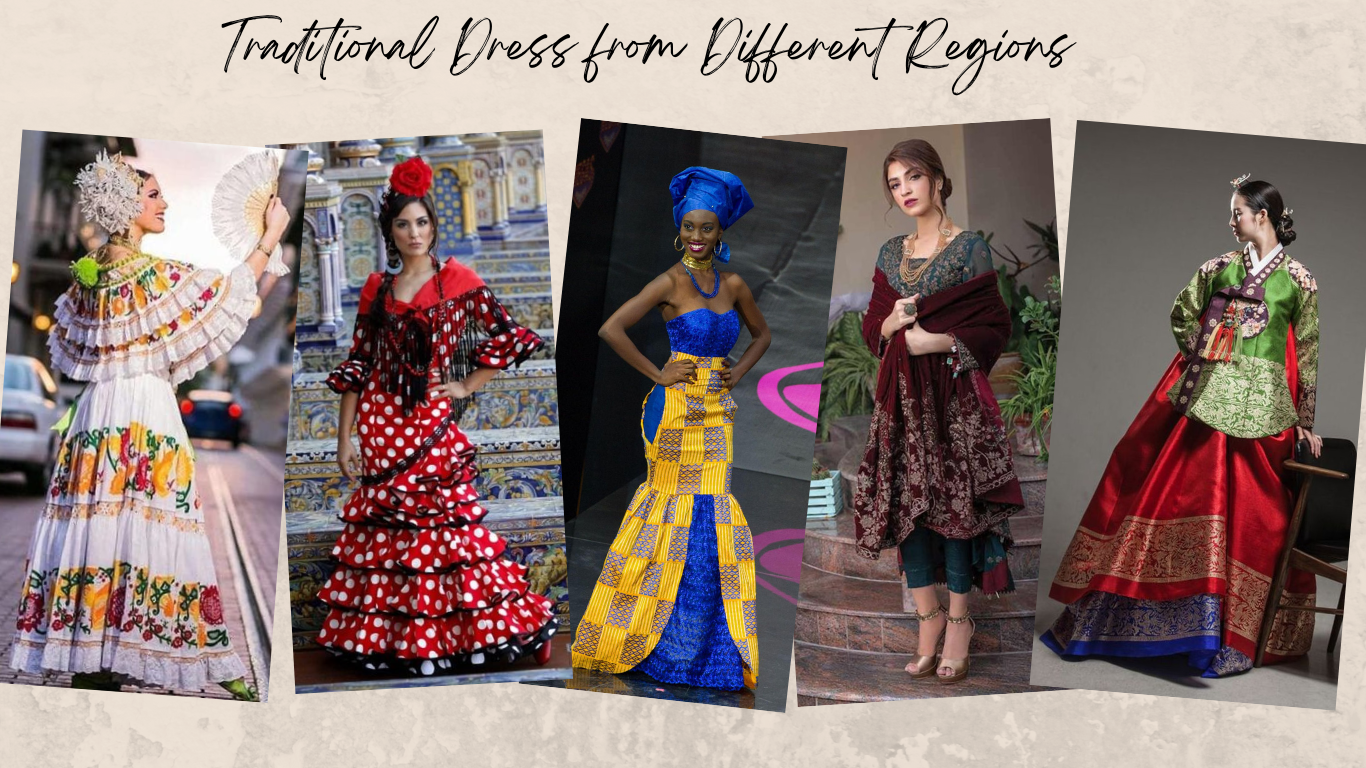Traditional Dress from Different Regions – The diversity of traditional dress across the world is a reflection of the rich cultural heritage that has been passed down through generations. Each region has its own unique style, color, and fabric, which reflects its history, geography, and climate. Here, we take a closer look at traditional dress from different regions.
Asia: Asia is a vast continent with a rich and diverse cultural heritage. Traditional dress in Asia varies greatly, from the colorful sarees of India to the elegant hanboks of Korea. In India, sarees are the traditional dress for women, which is a long piece of fabric draped around the body. In Japan, the kimono is a long robe-like dress that is typically worn by women. In Korea, the hanbok is a colorful dress that is often worn during special occasions such as weddings and festivals.
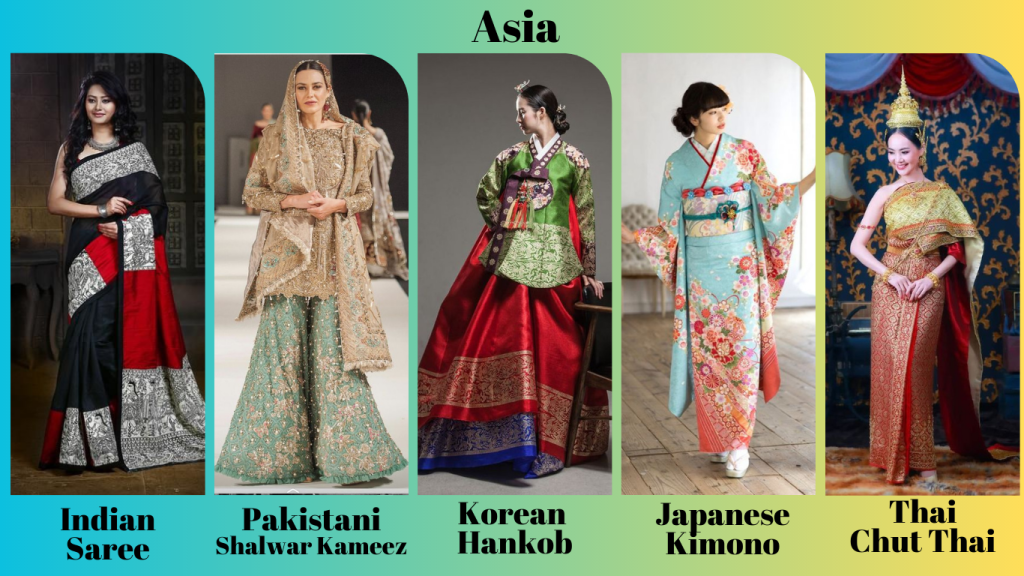
Africa: The continent of Africa is home to a wide variety of traditional dress styles. In North Africa, the traditional dress for women is the kaftan, which is a loose-fitting, ankle-length dress that is often decorated with intricate embroidery. In West Africa, the dashiki is a colorful tunic that is often worn by men, while the boubou is a flowing robe-like dress that is worn by women. In East Africa, the kanga is a brightly colored wrap that is worn by women.
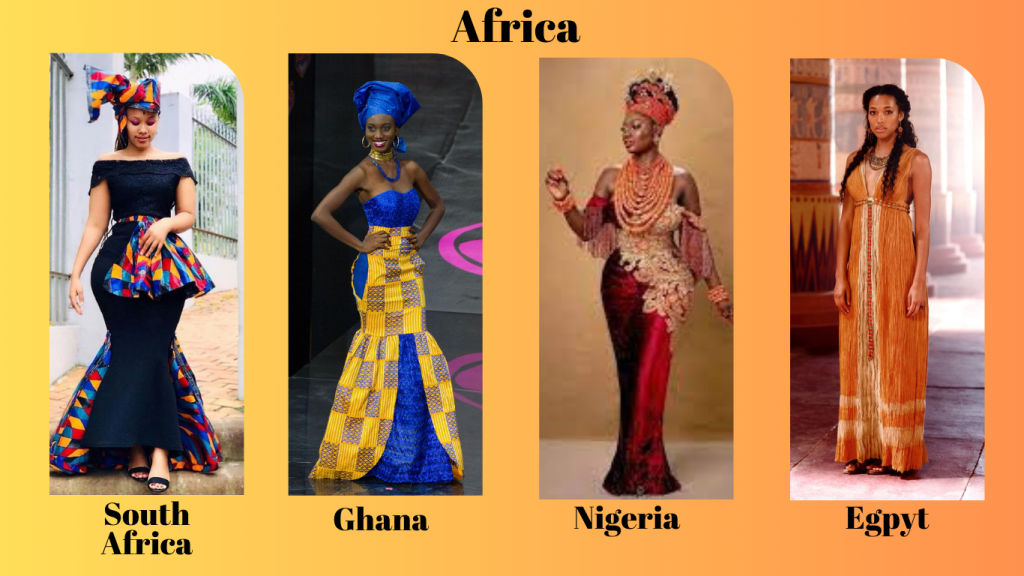
Europe: Europe has a rich cultural heritage and this is reflected in the traditional dress of the different regions. In Scotland, the kilt is the traditional dress for men, which is a knee-length skirt made of tartan fabric. In Spain, the flamenco dress is a colorful, ruffled dress that is worn during traditional dance performances. In Hungary, the folk dress is a colorful, embroidered dress that is often worn during festivals and celebrations.
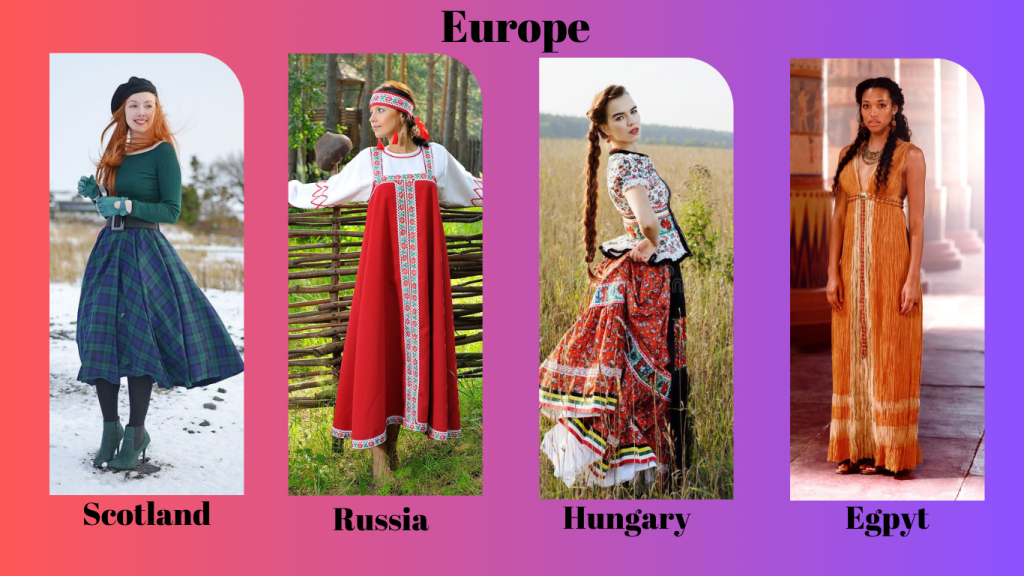
Middle East: The traditional dress in the Middle East is often influenced by Islamic culture. In Saudi Arabia, the thobe is a long, loose-fitting robe that is worn by men, while the abaya is a black, full-length dress that is worn by women. In Iran, the chador is a long, flowing cloak that is worn by women to cover their entire body. In Turkey, the kaftan is a long, robe-like dress that is often decorated with intricate embroidery.
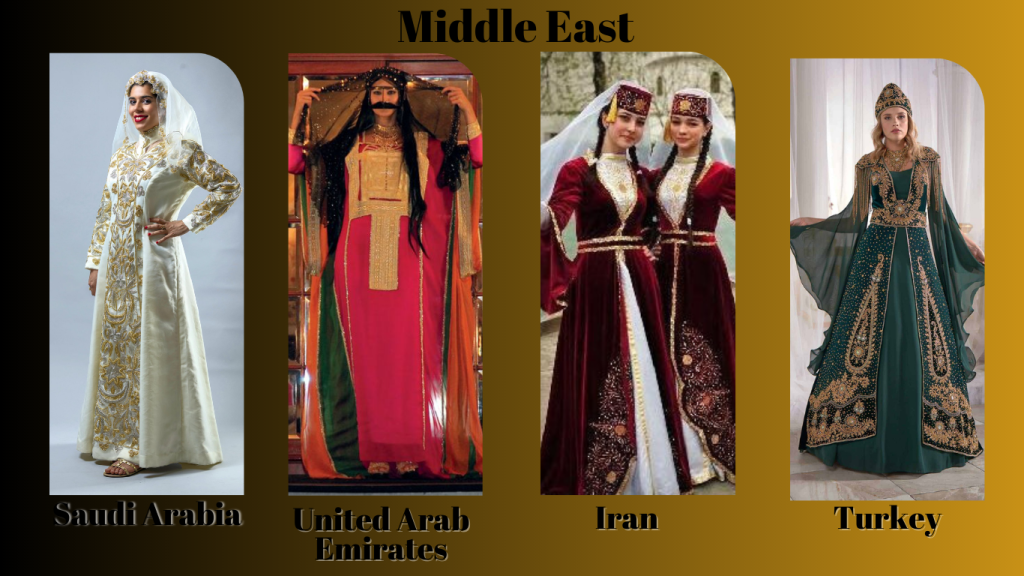
North America: Traditional dress in North America varies greatly between the different regions. In Mexico, the traditional dress for women is the colorful, embroidered dress known as the huipil, while the poncho is a traditional garment that is worn by men and women. In the United States, traditional dress varies depending on the region, with cowboy hats and boots being popular in the West, and brightly colored dresses and shirts being worn during Mardi Gras in Louisiana.

South America: South America is a diverse continent with a rich cultural heritage. In Peru, the traditional dress for women is the brightly colored, embroidered dress known as the pollera, while the poncho is a traditional garment that is worn by both men and women. In Brazil, the traditional dress is the colorful, feathered costume worn during carnival, while in Argentina, the gaucho outfit is a popular traditional dress for men.
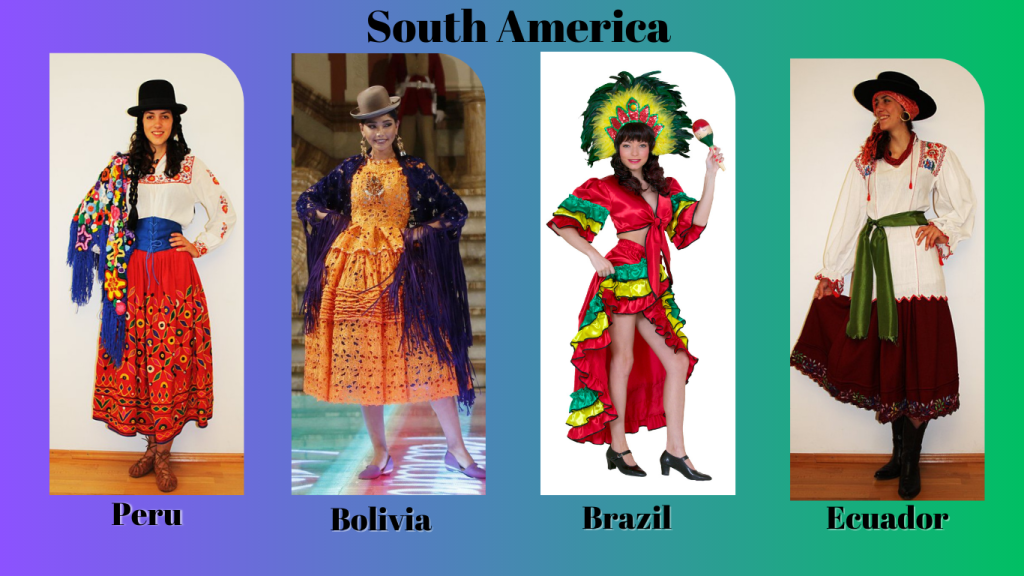
In conclusion, traditional dress from different regions is a reflection of the diverse cultural heritage that has been passed down through generations. Each region has its own unique style, color, and fabric, which reflects its history, geography, and climate. By learning about traditional dress, we can gain a greater appreciation of the diversity and richness of the world’s cultures.
Follow us on Social-media

